The Wurzburg Residenz is a lavish masterpiece of Baroque architecture nestled in Bavaria, Germany. For us, this was the first site we visited as we began our road trip down the Romantic Road. It really set the stage and was hard to top. This grand palace, built in the 18th century, is a symbol of regal opulence and artistic brilliance. Every room is filled with artistic wonder and grand splendor. The Residenz was commissioned by Prince-Bishop Johann Phillip Franz von Schonborn, the first Prince-Bishop to reside here and officially moving the Prince-Bishop residence from nearby Marienberg Fortress. This palace also has the largest painted fresco in the world, which is a key attraction!
Why we never judge a book by its cover
If you know me, you know I have seen a lot of castles, palaces, and fortresses. I was kinda obsessed with them as a kid. So walking up to this one, I was worried I might be disappointed. It just wasn’t all that impressive from the parking lot. But in a way, it was nice because I was in for a real surprise.
As we approached it, I am sure one of my kids said something like, “This isn’t Versailles.” And, I understood the sentiment; I was secretly thinking the same thing. I did know something they didn’t though. My boss had come through the region on a River boat tour a month earlier, and he had told me this palace was one of his favorite sites. He is a smart man who has been many places. I knew he couldn’t be wrong. So I pushed my own sentiment aside and hustled inside to buy our tickets. We timed our arrival so that we would be there in time to join the 11am English-language tour. The palace administration offers an 11am and 3pm tour, year-round, with extra tours at 1:30pm & 4:30pm April through October. It didn’t cost us any extra for the tour; we just had to time our visit right.
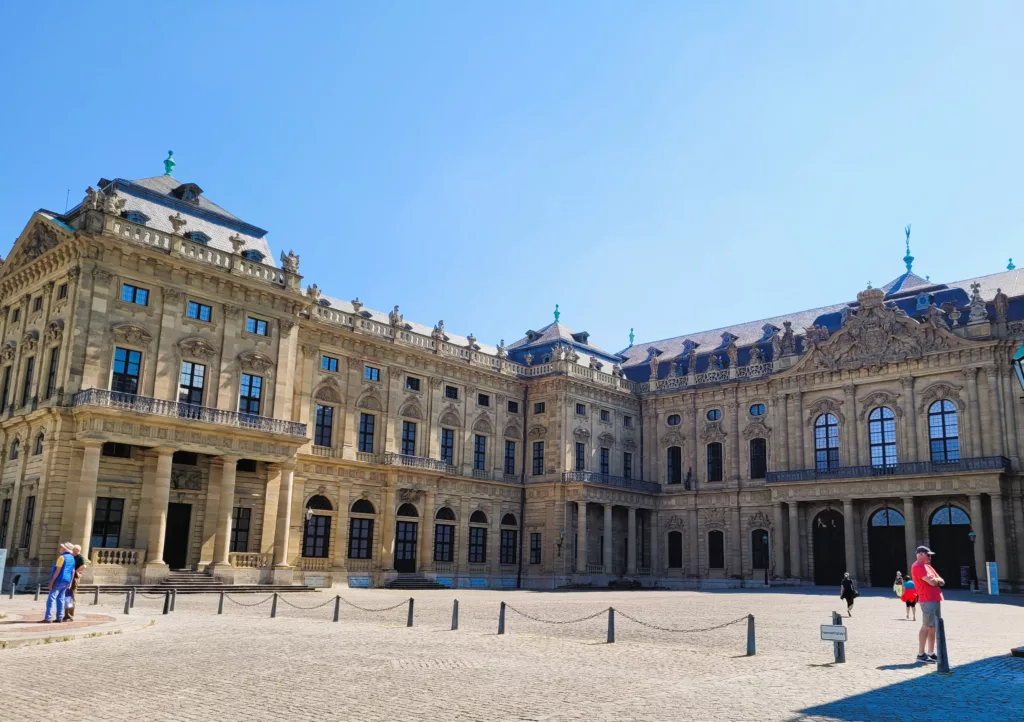
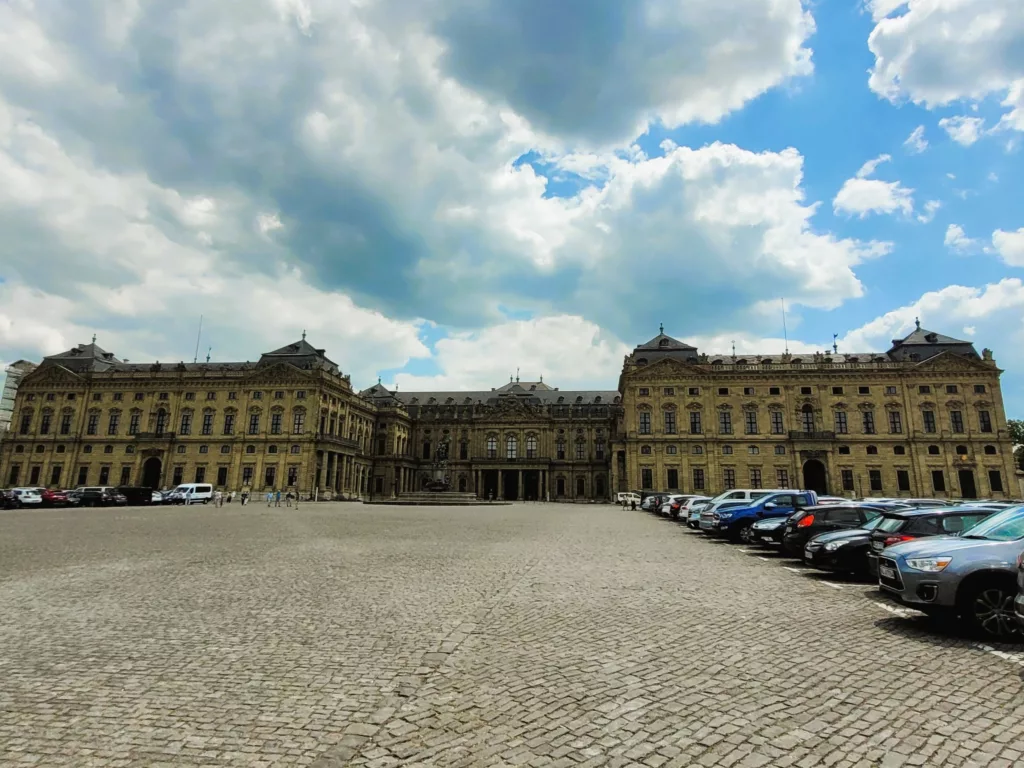
A journey of enlightenment and utter amazement begins
The Wurzburg Residenz tour was a great idea. It was really good. It only covers a small portion of the palace rooms, but what it does cover, it does so amazingly well. Without the interpretation and context from the tour guide, we would have viewed the art and rooms, but we wouldn’t have understood it. And believe me, this palace has art, in particular, that you will want to understand. The tour guide spent a lot of time providing the history of the magnificent fresco painted on the ceiling of the grand stairwell by Italian artist Giovanni Battista Tiepolo (with his son). It is approximately 600 square meters in size, and shows Apollo and the Four Continents. It’s basically a who’s who of the 18th century, from a European western perspective.
Apollo and the Four Continents
Apollo, the sun god, can be found in the middle. And then there are four ladies, one on each representing a continent. Only Europe, Asia, Africa, and America made it on the fresco. So, starting with America, she’s a native American decked out in feathers and riding on an alligator. The wild and savage scene is complete with a few human skulls lying around. My thoughts were a bit conflicting on this one, but it was certainly interesting to see what people must’ve thought back then.
Then there is Africa. This lady had a turban and is sitting atop a camel. The scene is reminiscent of an exotic marketplace with traders selling incense and textiles. There’s also a monkey and ostrich hanging around, because why not?
Asia depicts a land of wisdom and power. And her leading lady is sitting on an elephant. There’s a prisoner in chains and some people hanging around an obelisk, holding a symbol of monarchy or medicine.
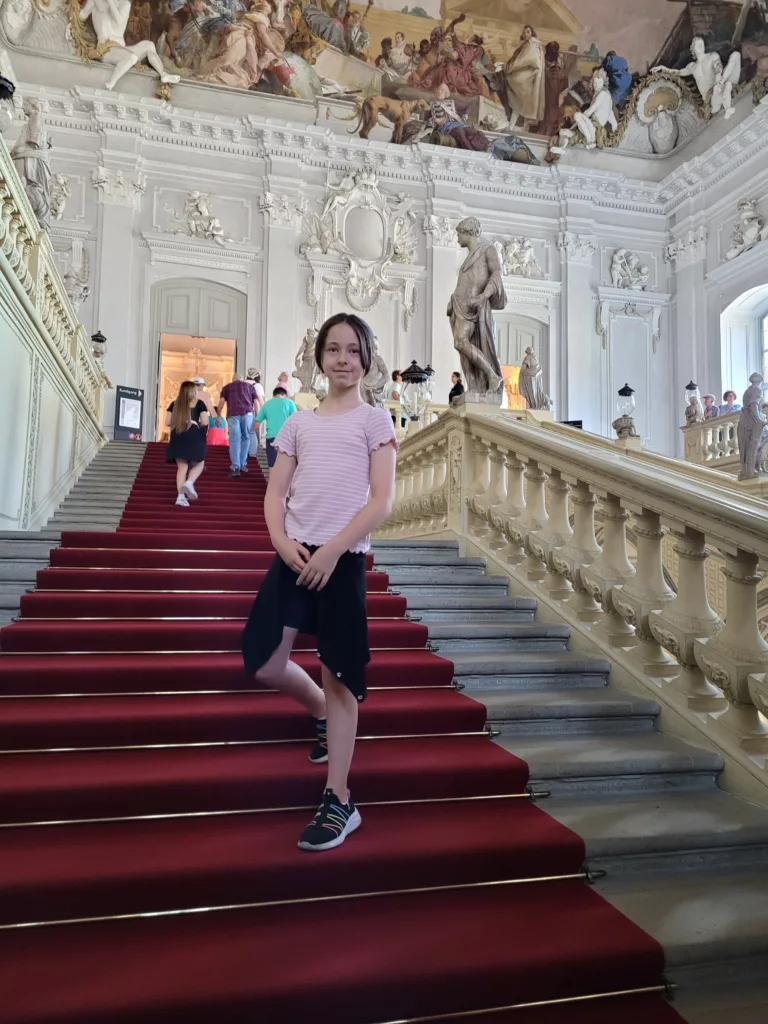
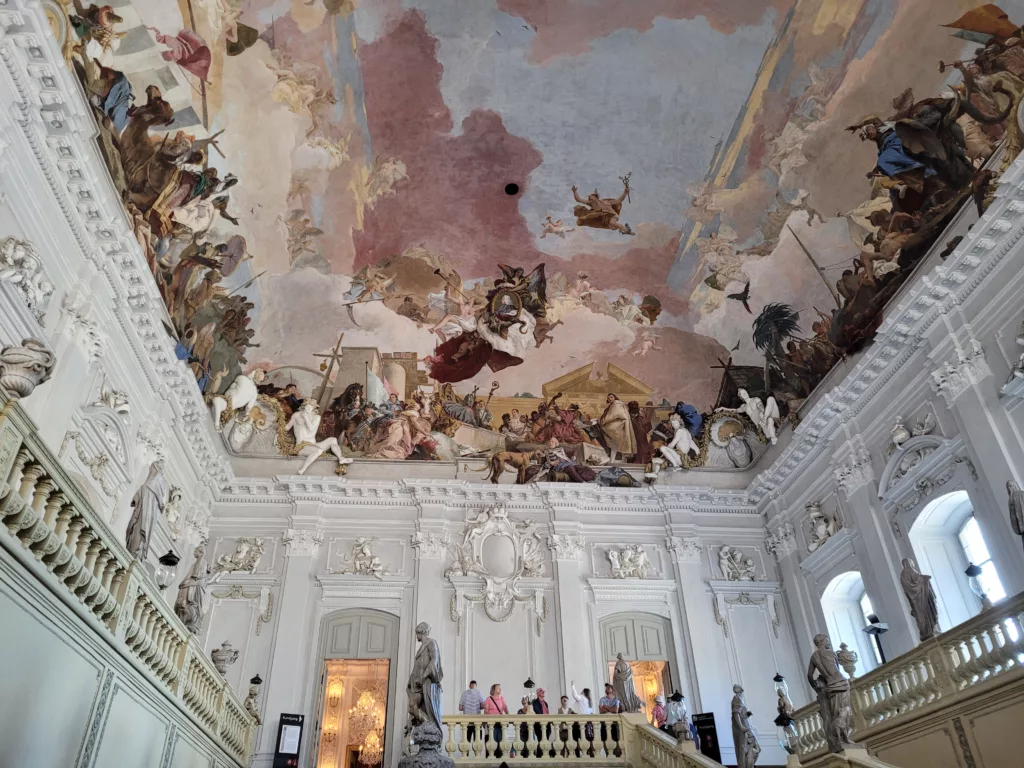
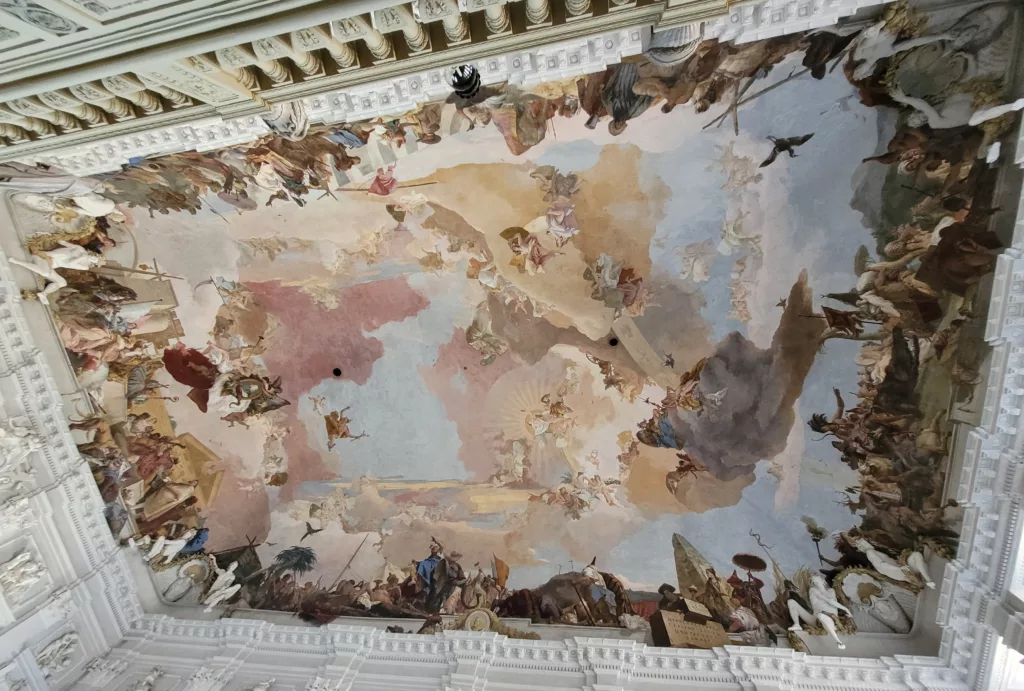
And Lady Europe...
Lastly, we see Europe, in all her glory. She’s sitting on a throne, of course, with a white bull that hints to her mythological origins. She is surrounded by symbols of the arts. Tiepolo and the palace architect, Balthasar Neuman, are also painted into the scene. And the guy who paid for the fresco, Karl Philipp von Greiffenclau (Prince-Bishop at the time), is seen in a portrait medallion (you can see this in the photo below). This fresco was a highlight of Tiepolo’s career. However, I recently visited the Royal Palace of Madrid, and instantly recognized a fresco there that had to be Tiepolo’s work (which I confirmed to be). So he definitely has a recognizable style even to the untrained eye.
One other thing to note is that this palace was mostly destroyed in WWII and rebuilt. However, the staircase and this fresco are some of the few pieces of the palace that somehow survived!
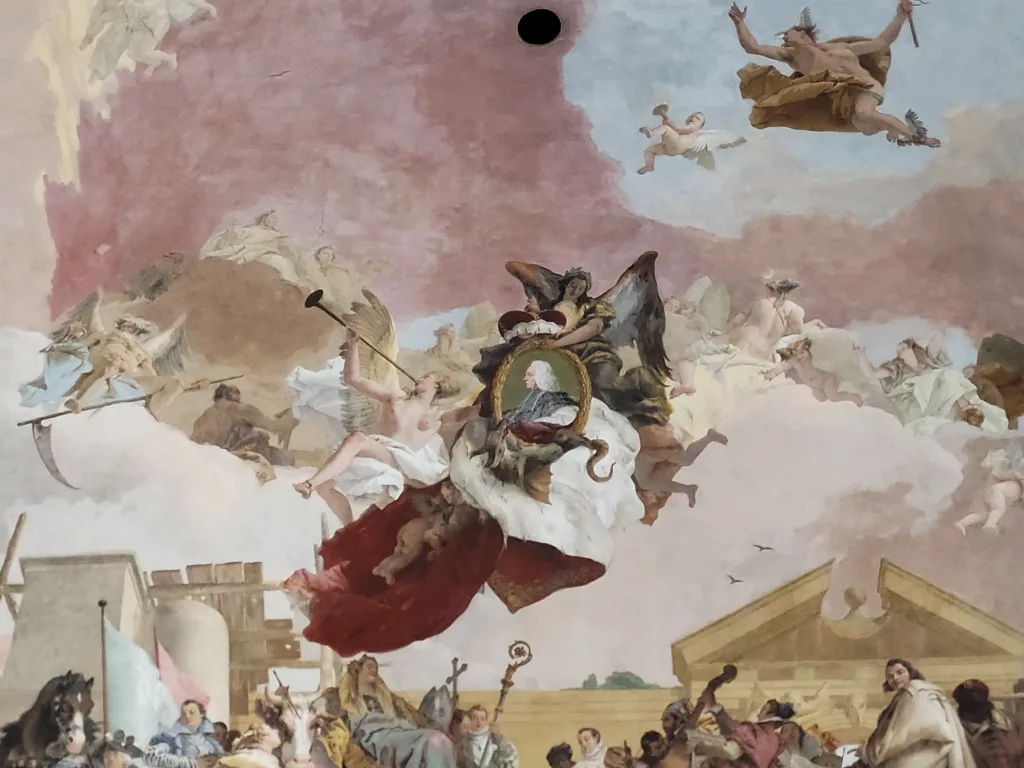
This place is a maximalist dream come true
As we continued our visit of the palace, I continued to be amazed, room after room. The inside is a feast for the eyes. It’s almost like they tried to out-do every previous room, whenever they decorated a new one. Everything was so lavish. Every detail was in excess. The Wurzburg Residenz is a perfect example of maximalism done on a grand scale. It’s lavish Baroque and Rococo decorations, rich colors, and intricate details will be appreciated by anyone who embraces this extravagant style. However, I think even minimalists will be intrigued.
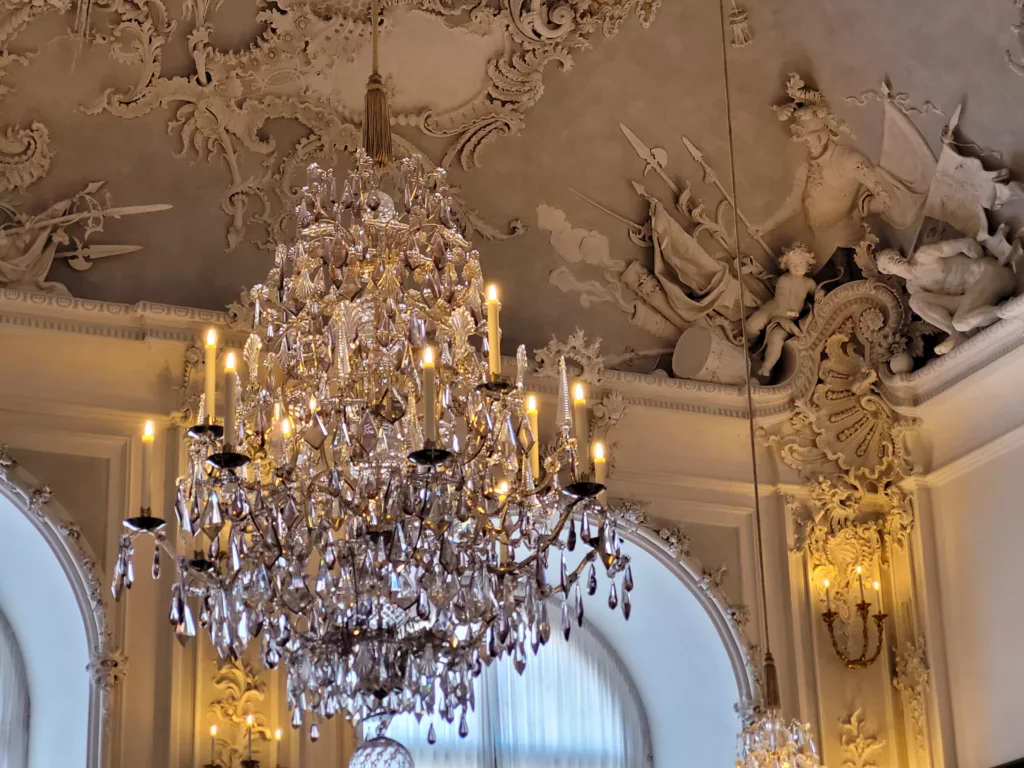
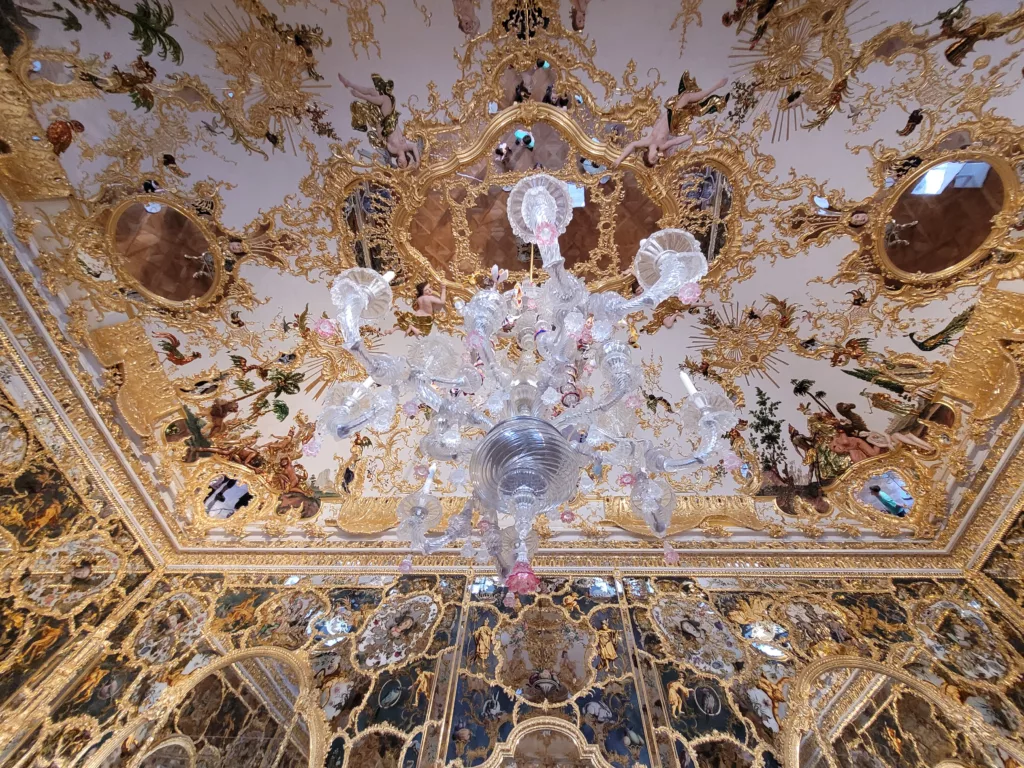
I was personally intrigued by the elaborate stucco work, sculptural details, and ornate moldings. And the lighting was grandeur in every sense. Really, no detail (or expense) was spared. I imagine visitors to this palace have been shocked and awed for centuries by this vast display of wealth and prestige.
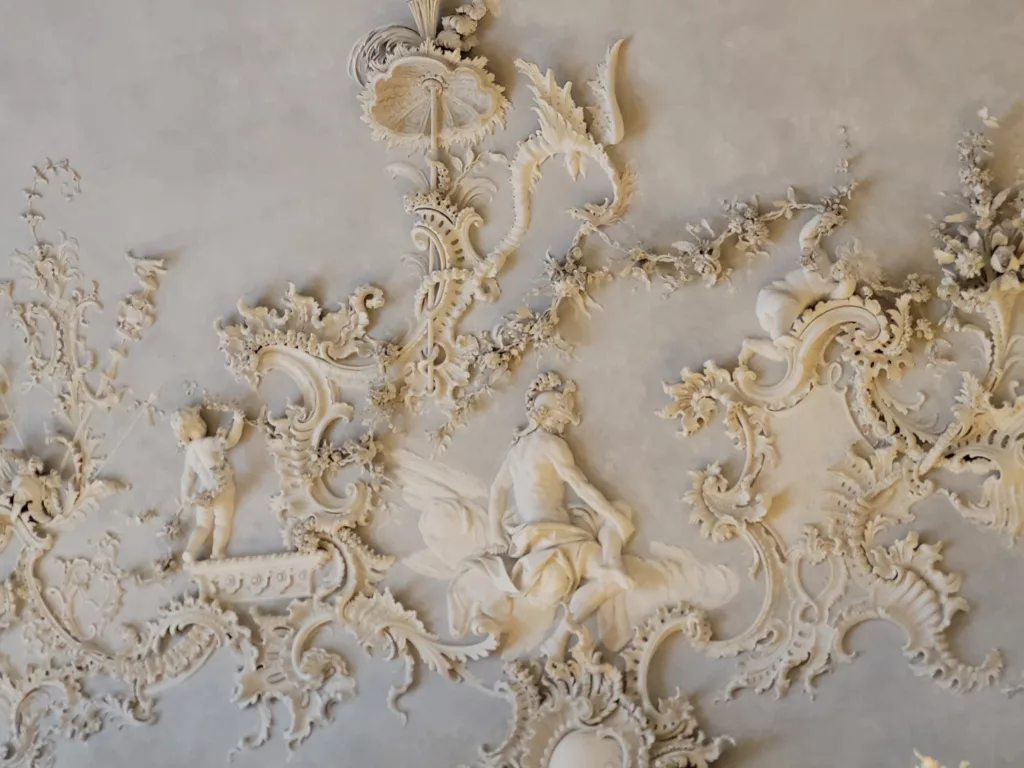
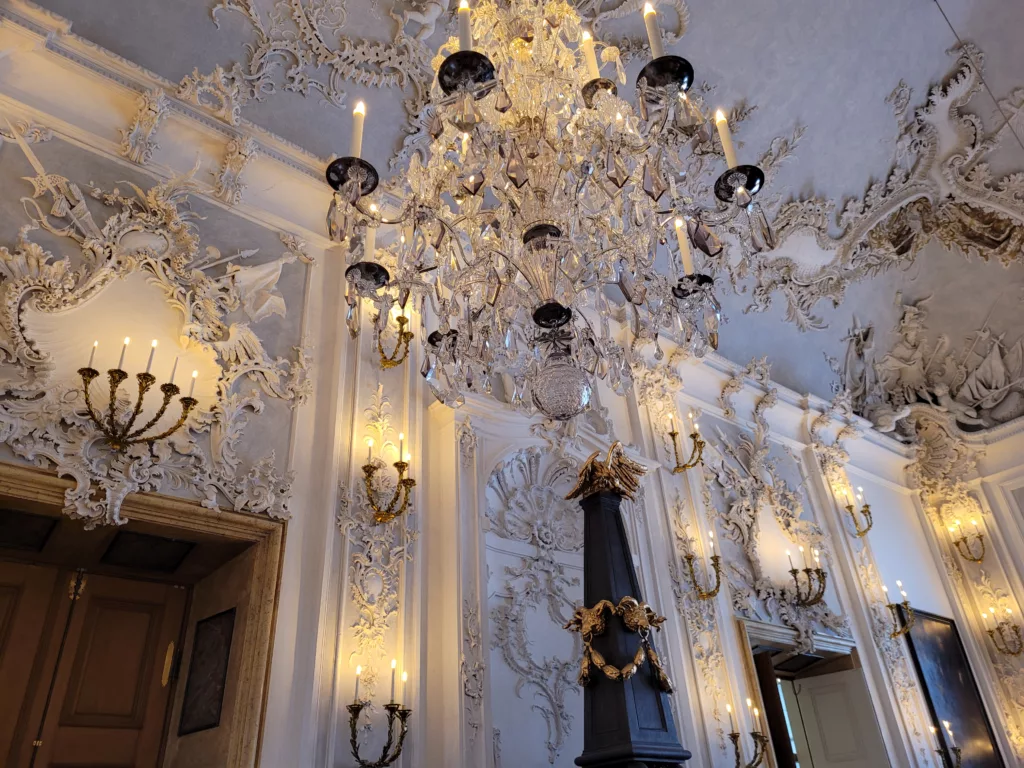
The tapestries continue to tell their stories
Just like everything else in this palace, the tapestries are lavish. They are exuberant. And surprisingly, they are the originals. While most of the palace was destroyed in WWII, the tapestries and other furnishings and fixtures were removed and stored in a secure location during the war. So while most of the palace itself is reconstructed, the decor is largely original.
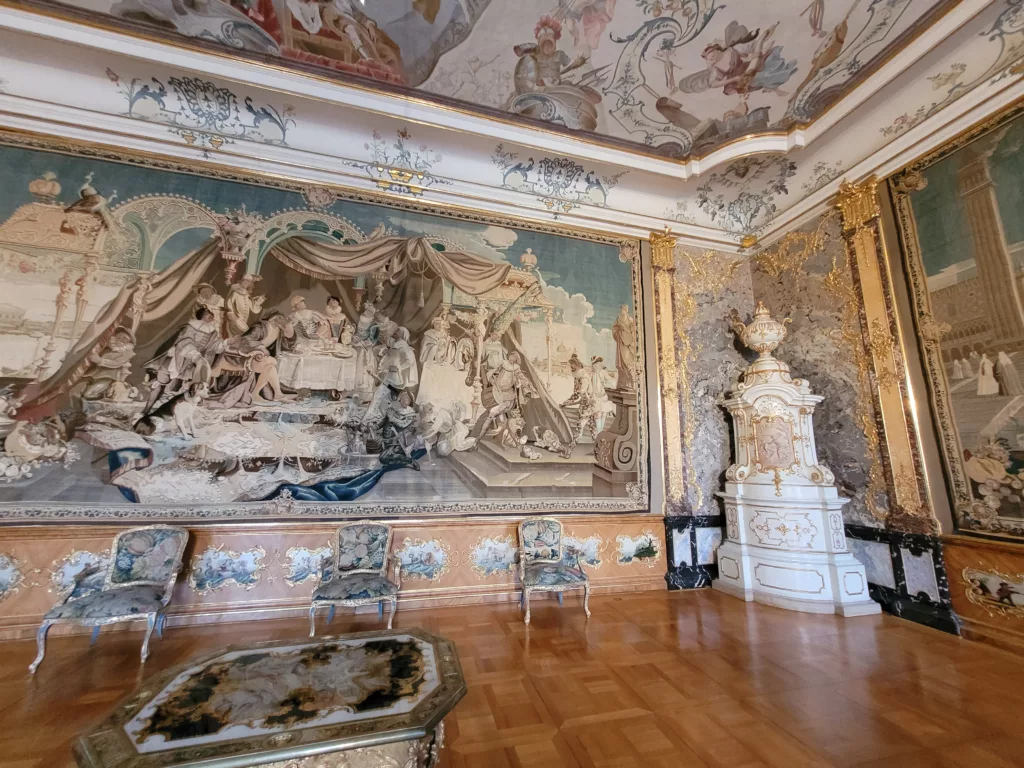
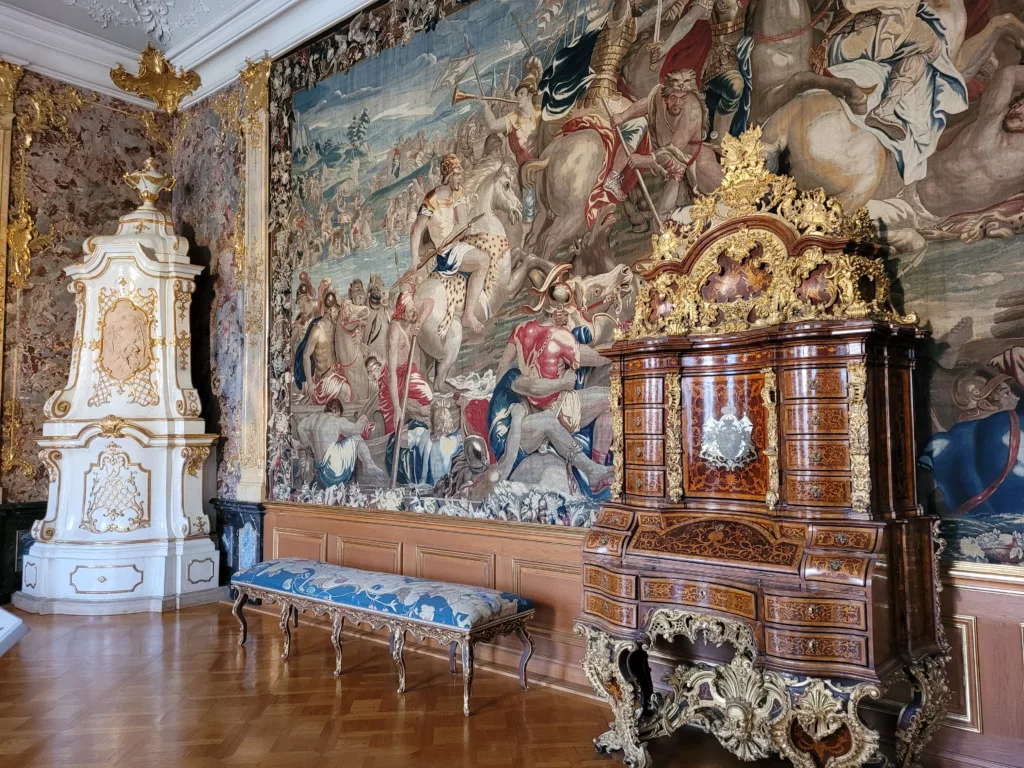
Seeing ourselves here
There were also many mirrors. Even a room and furniture made from mirrors. For those who tired of looking at the opulence, they could spend the time looking at themselves. We had fun with the mirrors, trying to capture ourselves in one or more of them.
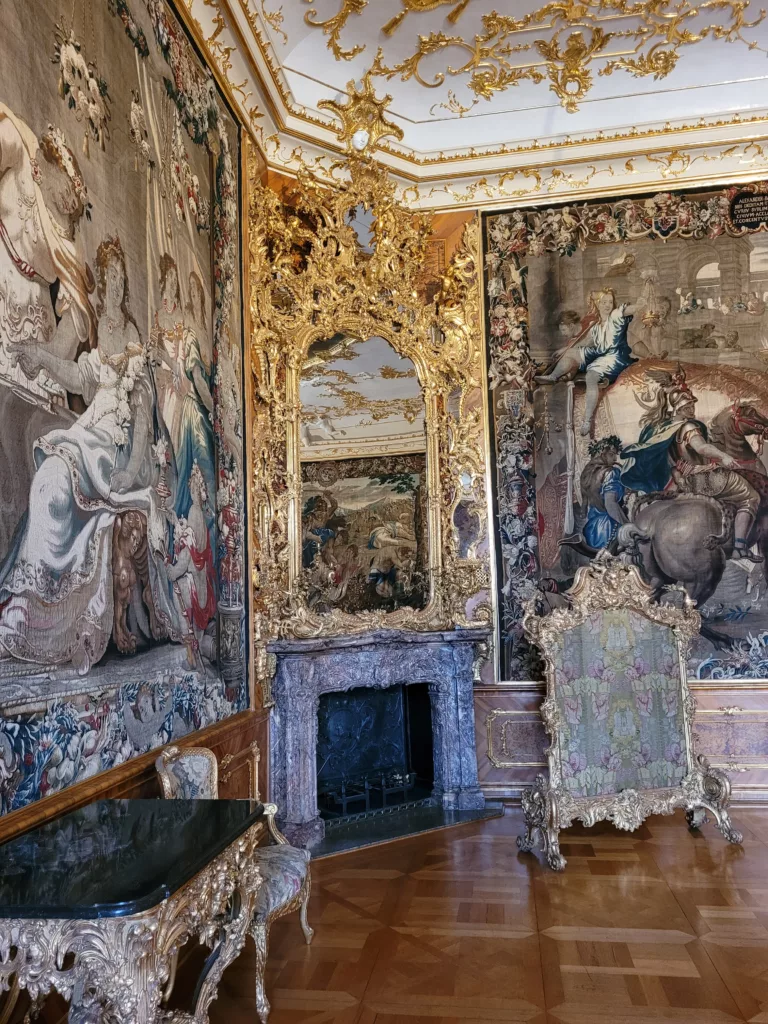
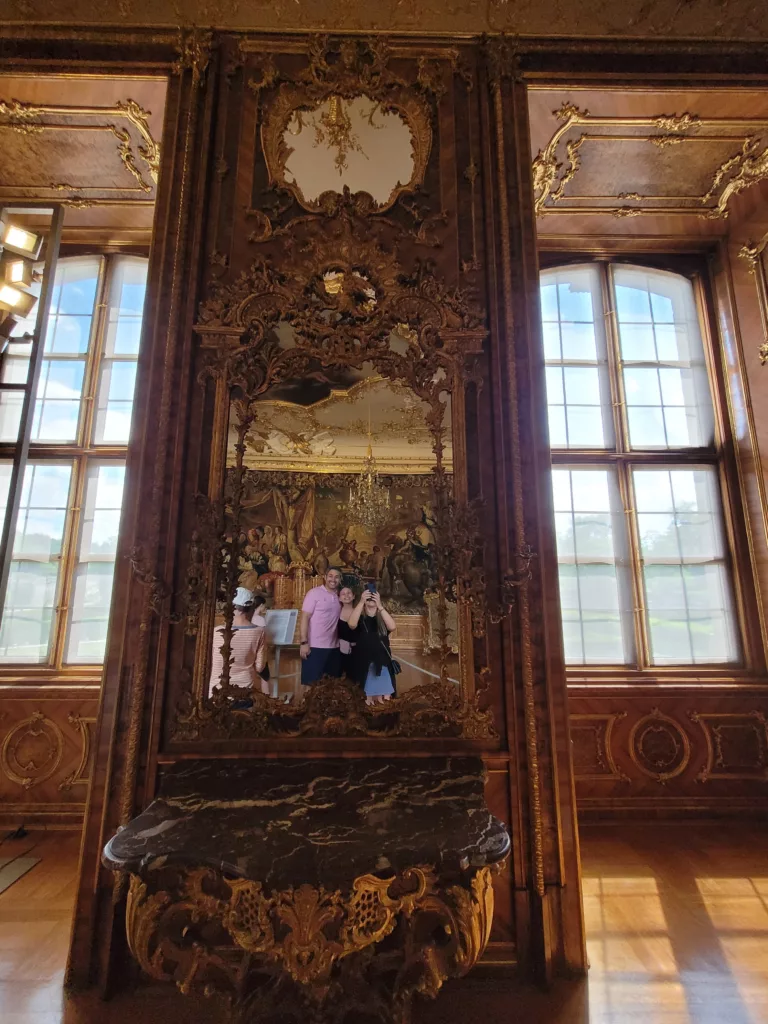
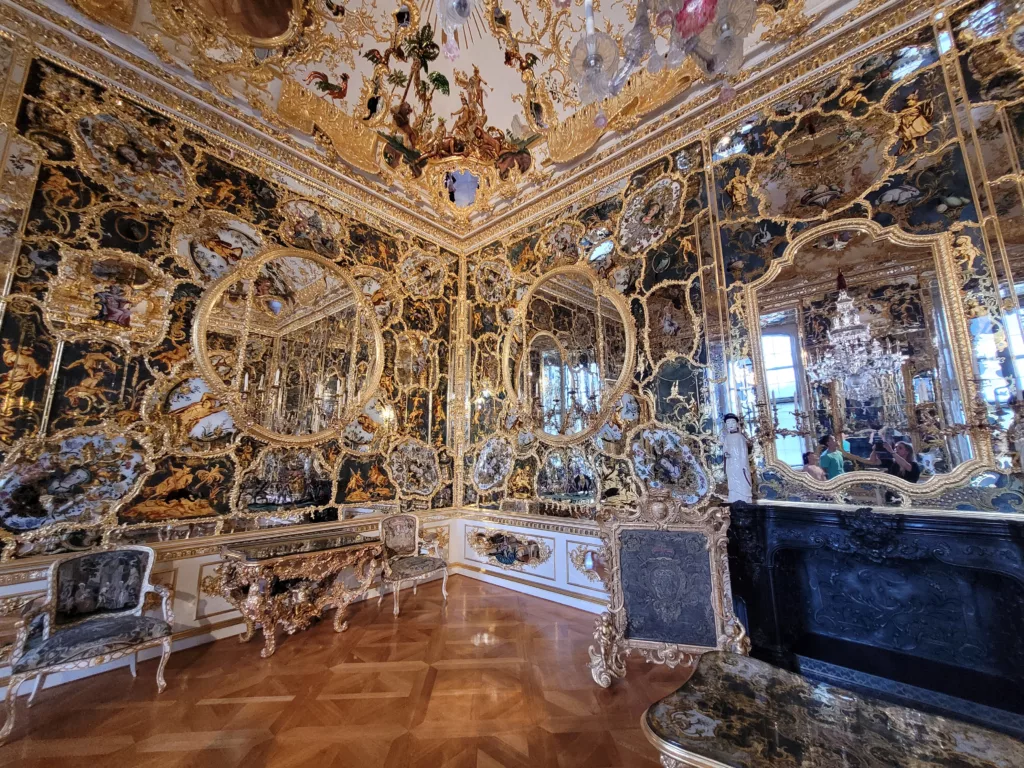
While the fresco in the stairwell is a headliner, and definitely steals the show, there are lots of other opportunities to view paintings throughout the rooms.
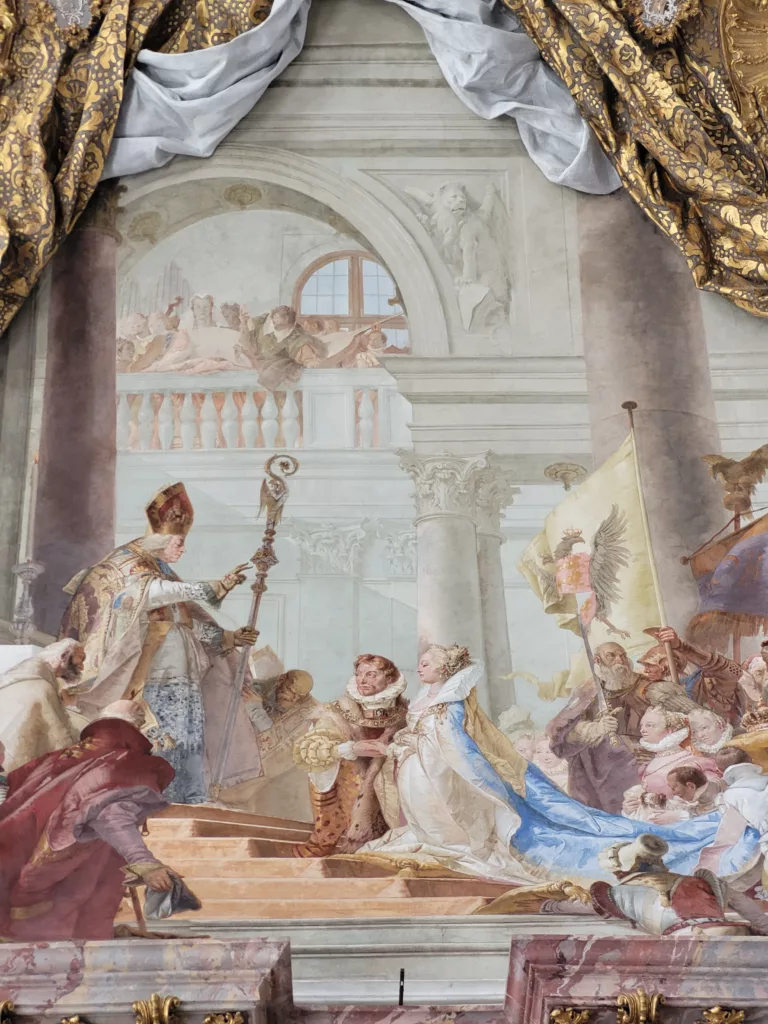
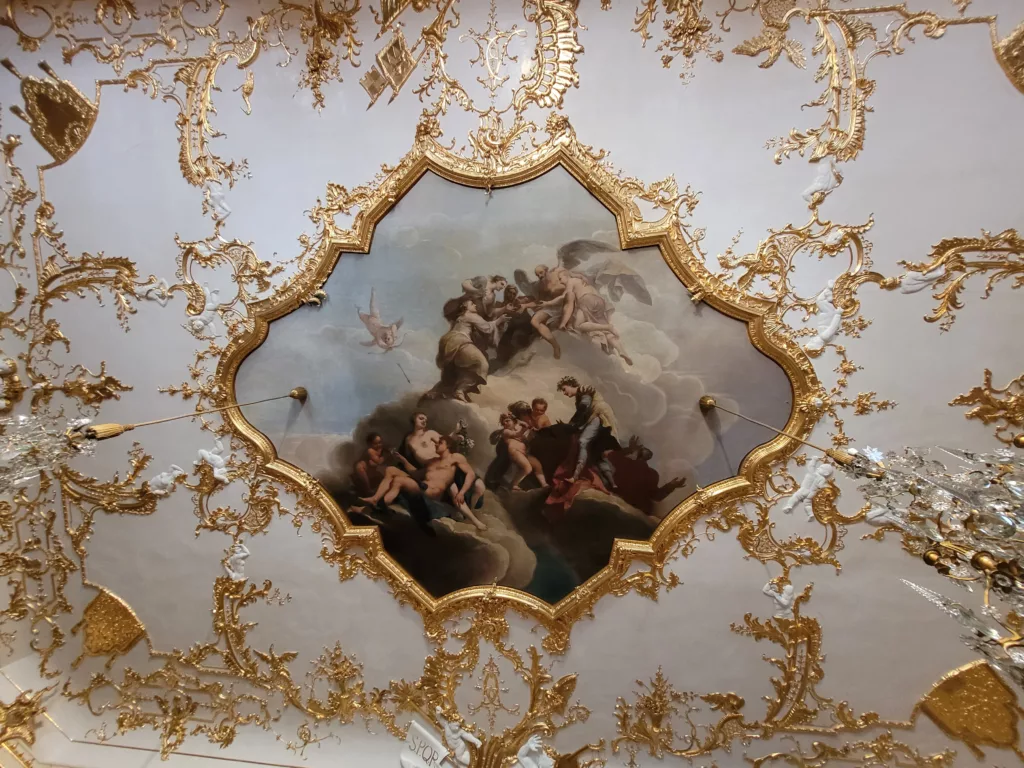
Odds and ends
Towards the end of the visit, further furnishings are on display. I really liked the old human-powered children’s carousel!
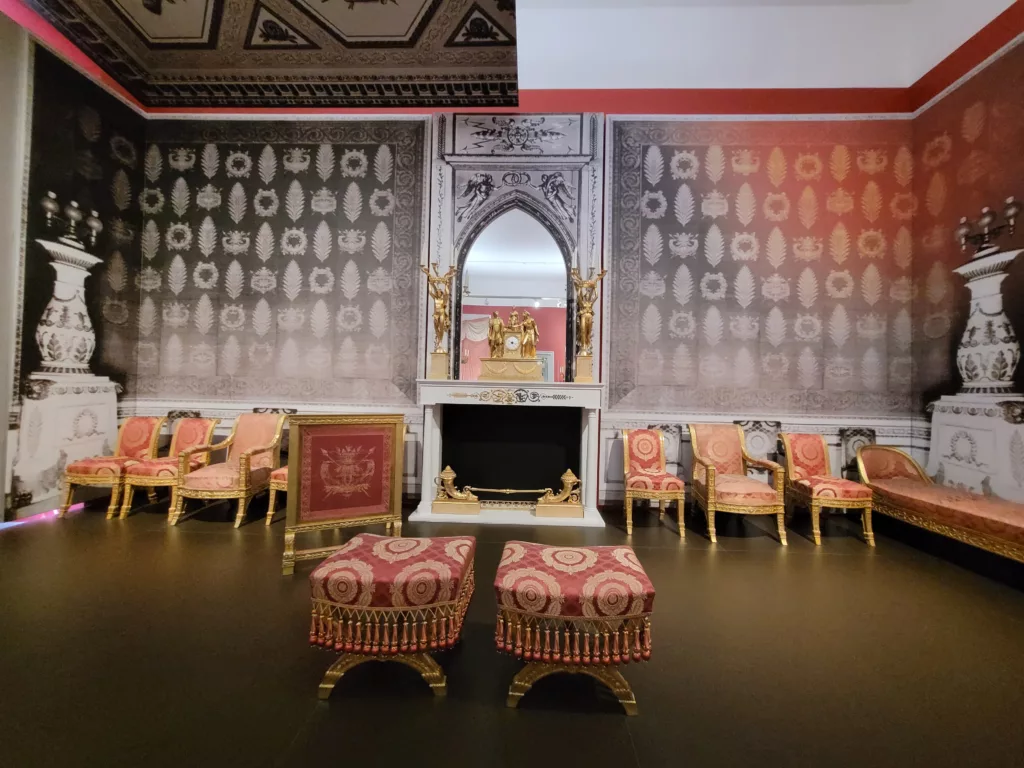
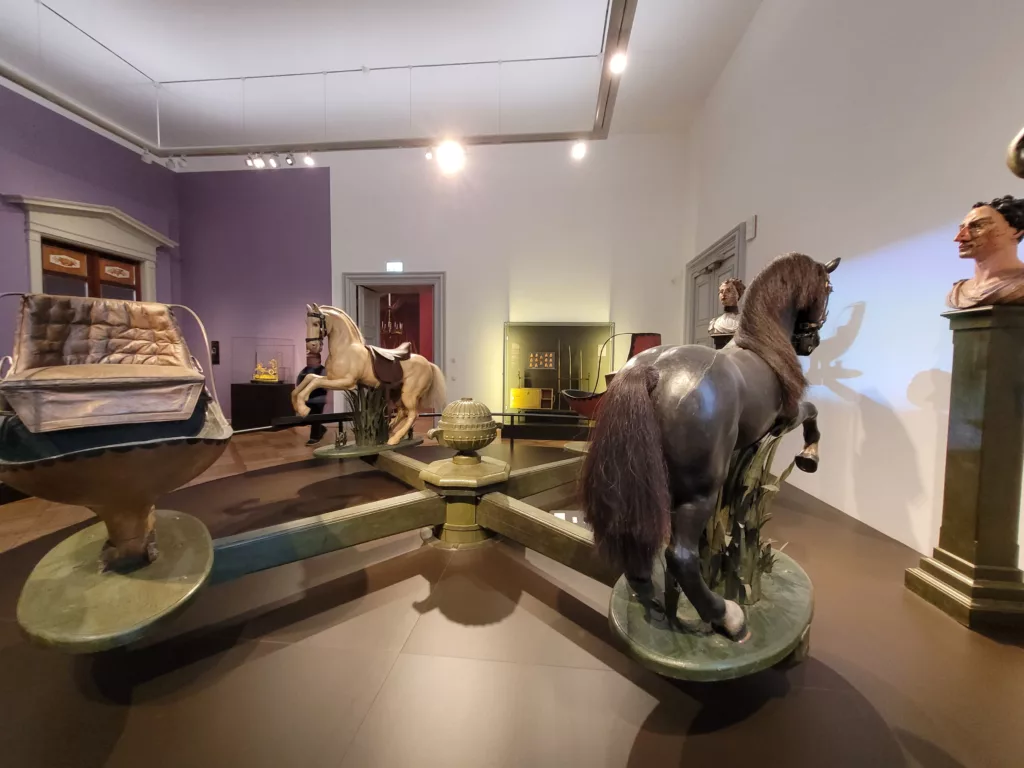
Planning a Visit
Official Website: https://www.residenz-wuerzburg.de/englisch/residenz/index.htm
Opening Hours:
April to October: 9am to 6pm daily, with few exceptions
November to March: 10am to 4:30pm daily, with few exceptions
Check the official hours here.
Tickets:
9 EUR for adults, 8 EUR for those qualifying for a discount. Children under 18 are free, and access to the Court Church and Court Garden are free. More details are here.
Note: You can purchase the 14-day Bavarian Palace Administration ticket at the Wurzburg Residenz. Prices are 35 EUR for a single adult, or 66 EUR for a family. If you are going to visit other castles in Bavaria, this ticket can save you money. However, it did not save us money. We were only able to use it here at Wurzburg Residenz, meaning we paid 66 EUR instead of 18 EUR. We were not able to use it at Marienberg Fortress due to scheduled construction. And we were also not able to use it at Neuschwanstein, as we did not have a reservation even though we had a paid ticket. So if you do buy the pass, make sure to make any reservations even if you already have the ticket. And make sure the places you will visit are open. I requested a partial refund when we were denied entry at Neuschwanstein, but no refund was given.

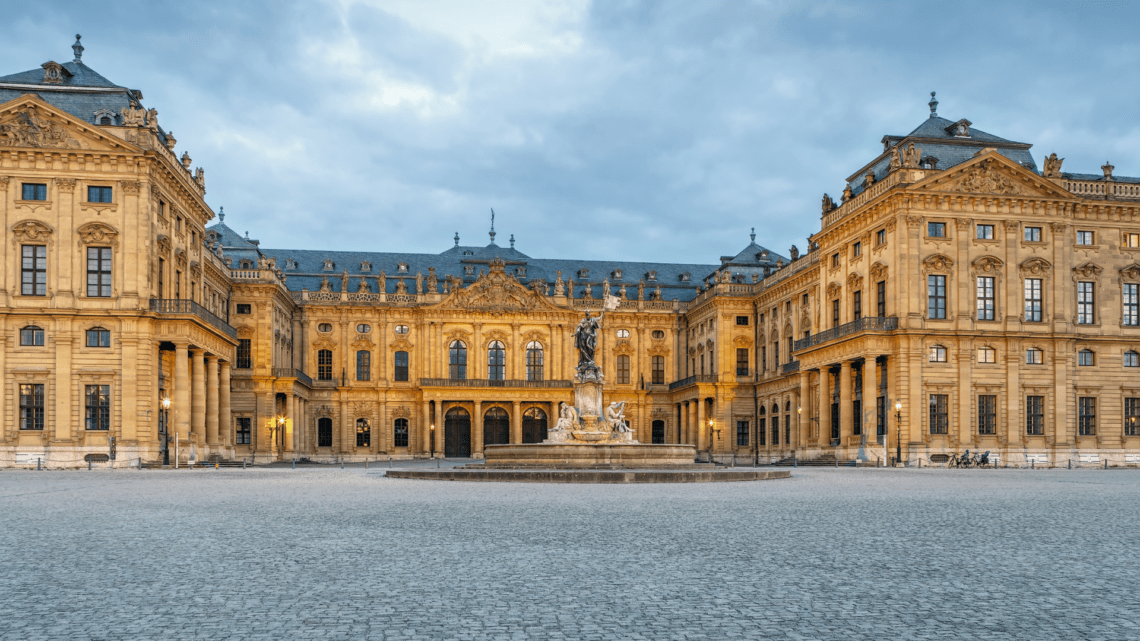



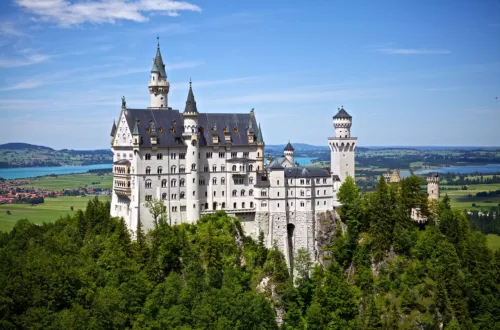
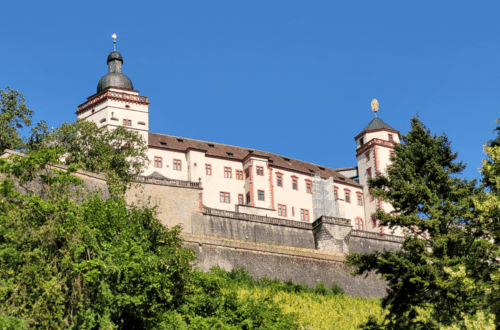
2 Comments on “Exploring royal splendor at Wurzburg Residenz in Germany”